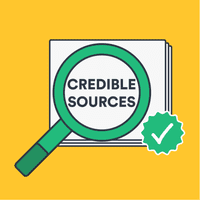How to write a good thesis introduction

Many people struggle to write a thesis introduction. Much of your research prep should be done and you should be ready to start your introduction. But often, it’s not clear what needs to be included in a thesis introduction. If you feel stuck at this point not knowing how to start, this guide can help.
A good introduction draws readers in while providing the setup for the entire project. There is no single way to write an introduction that will always work for every topic, but the points below can act as a guide. These points can help you write a good thesis introduction.
1. Identify your readership
Before even starting with your first sentence, consider who your readers are. Most likely, your readers will be the professors who are advising you on your thesis.
You should also consider readers of your thesis who are not specialists in your field. Writing with them in your mind will help you to be as clear as possible; this will make your thesis more understandable and enjoyable overall.
2. Hook the reader and grab their attention
The first sentence of the thesis is crucial. Looking back at your own research, think about how other writers may have hooked you.
It is common to start with a question or quotation, but these types of hooks are often overused. The best way to start your introduction is with a sentence that is broad and interesting and that seamlessly transitions into your argument.
Once again, consider your audience and how much background information they need to understand your approach. You can start by making a list of what is interesting about your topic:
- Are there any current events or controversies associated with your topic that might be interesting for your introduction?
- What kinds of background information might be useful for a reader to understand right away?
- Are there historical anecdotes or other situations that uniquely illustrate an important aspect of your argument?
3. Provide relevant background
A good introduction also needs to contain enough background information to allow the reader to understand the thesis statement and arguments. The amount of background information required will depend on the topic.
There should be enough background information so you don't have to spend too much time with it in the body of the thesis, but not so much that it becomes uninteresting.
4. Give the reader a sense of what the paper is about
Let the reader know what the purpose of the study is. Make sure to include the following points:
- Briefly describe the motivation behind your research.
- Describe the topic and scope of your research.
- Explain the practical relevance of your research.
- Explain the scholarly consensus related to your topic: briefly explain the most important articles and how they are related to your research.
5. Preview key points and lead into your thesis statement
At the end of your introduction, you should lead into your thesis statement by briefly bringing up a few of your main supporting details and by previewing what will be covered in the main part of the thesis. You’ll want to highlight the overall structure of your thesis so that readers will have a sense of what they will encounter as they read.
Frequently Asked Questions about writing a good thesis introduction
🙊 What is the secret to writing a great thesis introduction?
A good introduction draws readers in while providing the setup for the entire project. There is no single way to write an introduction that will always work for every topic, but these tips will help you write a great introduction:
- Identify your readership.
- Grab the reader's attention.
- Provide relevant background.
- Preview key points and lead into the thesis statement.
🙉 What information should I include in my thesis introduction?
A good introduction needs to contain enough background information, and let the reader know what the purpose of the study is. Make sure to include the following points:
- Briefly describe the motivation for your research.
- Describe the topic and scope of your research.
- Explain the practical relevance of your research.
- Explain the scholarly consensus related to your topic: briefly explain the most important articles and how they are related to your research.
🙈 How long should my thesis introduction be?
The length of the introduction will depend on the length of the whole thesis. Usually, an introduction makes up roughly 10 per cent of the total word count.
🍌 How do I write an interesting thesis introduction?
The best way to start your introduction is with a sentence that is broad and interesting and that seamlessly transitions into your argument. Consider the audience, then think of something that would grab their attention.
🐒 Where can I find examples of thesis introductions?
In Open Access: Theses and Dissertations you can find thousands of recent works. Take a look at any of the theses or dissertations for real-life examples of introductions that were already approved.


